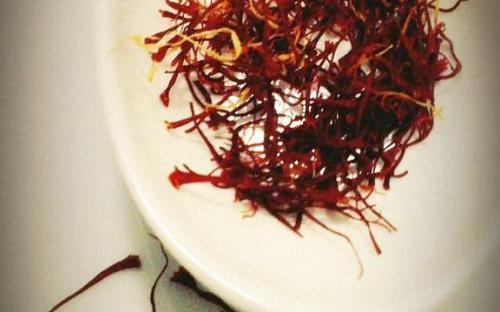Saffron (kesar)
Saffron is a spice derived from the flower of Crocus sativus, commonly known as the saffron crocus. Saffron is delicate and thread-like, each measuring 2.5 - 4 cm (1 -1.5 in). Its color is a bright orange-red, and in high quality saffron this is uniform. Saffron bearing white streaks or light patches is inferior and when light specks appear in its powdered form it suggests adulteration.
It is the most expensive spice of all. It has a distinctively pungent, honey-like flavor and aroma. It is available as whole threads or powdered. When ground they form a russet powder. The filaments can be lightly roasted, crumbled in a little hot water and left to infuse to bring out their full strength. Saffron is used to color rice dishes, sweets, puddings, sauces and soups to bright yellow.
Saffran– Names in different Indian Languages.
Hindi– Zaffran , Bengal – Keshar, Gujrati –Kesar , Punjabi – Kesar
Tamil - Kumkum a poo, Urdu – Zafran
Nutritional Information
Large dosages can be fatal. It has been recognized of value as an antispasmodic, diaphoretic, carminative, emmenagogic and sedative.
Culinary Uses
Because of its expense, intense flavor, and strong dying properties, very little saffron is required for culinary purposes and the key is to distribute it evenly throughout the dish being prepared. It can be crushed to a fine powder in a mortar and pestle. It is easier however, to steep the saffron in hot water— a pinch to a cup will create the desired flavor and color. Good saffron should expand on contact with the water and a cup should be sufficient for 0.5 kg (1 lb) of rice. Powdered saffron is added directly to the required ingredients of a dish
In Indian Cusine,. its most common function is to color rice yellow, as in festive Indian Pulavs and Biryanis. It is also used in desserts like” Kheer’ ,” Gujiya” and “Sevaiyan”.
In Northern India saffron is added in cold milk along with Almond paste to make refreshing drink.
Storage
It should be kept in airtight containers away from light and moisture.
Precaution
One pinch is enough for bringing color and flavor. More of it can make the dish bitter.
